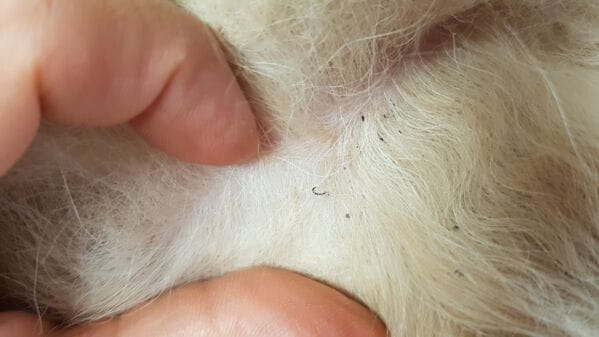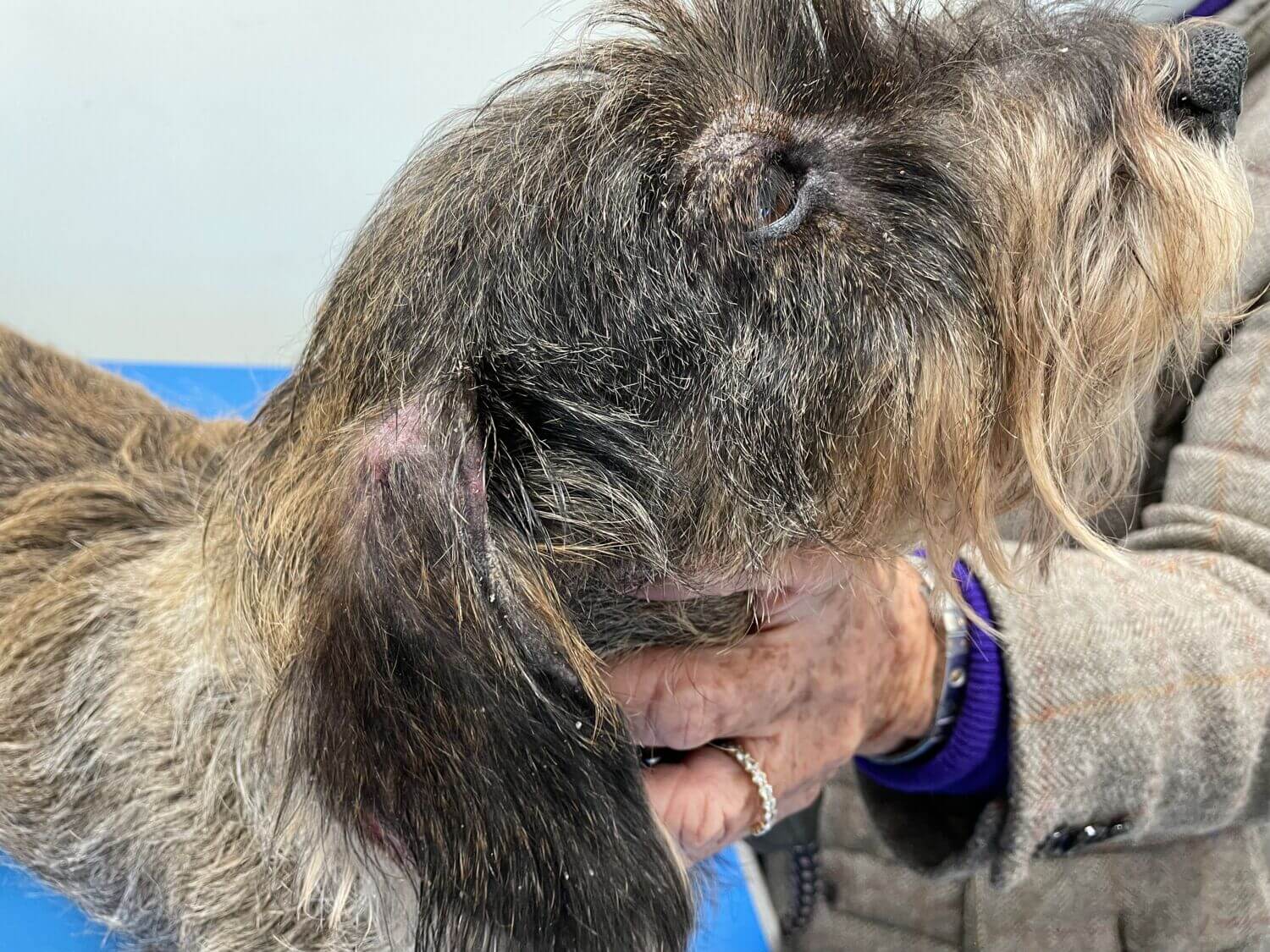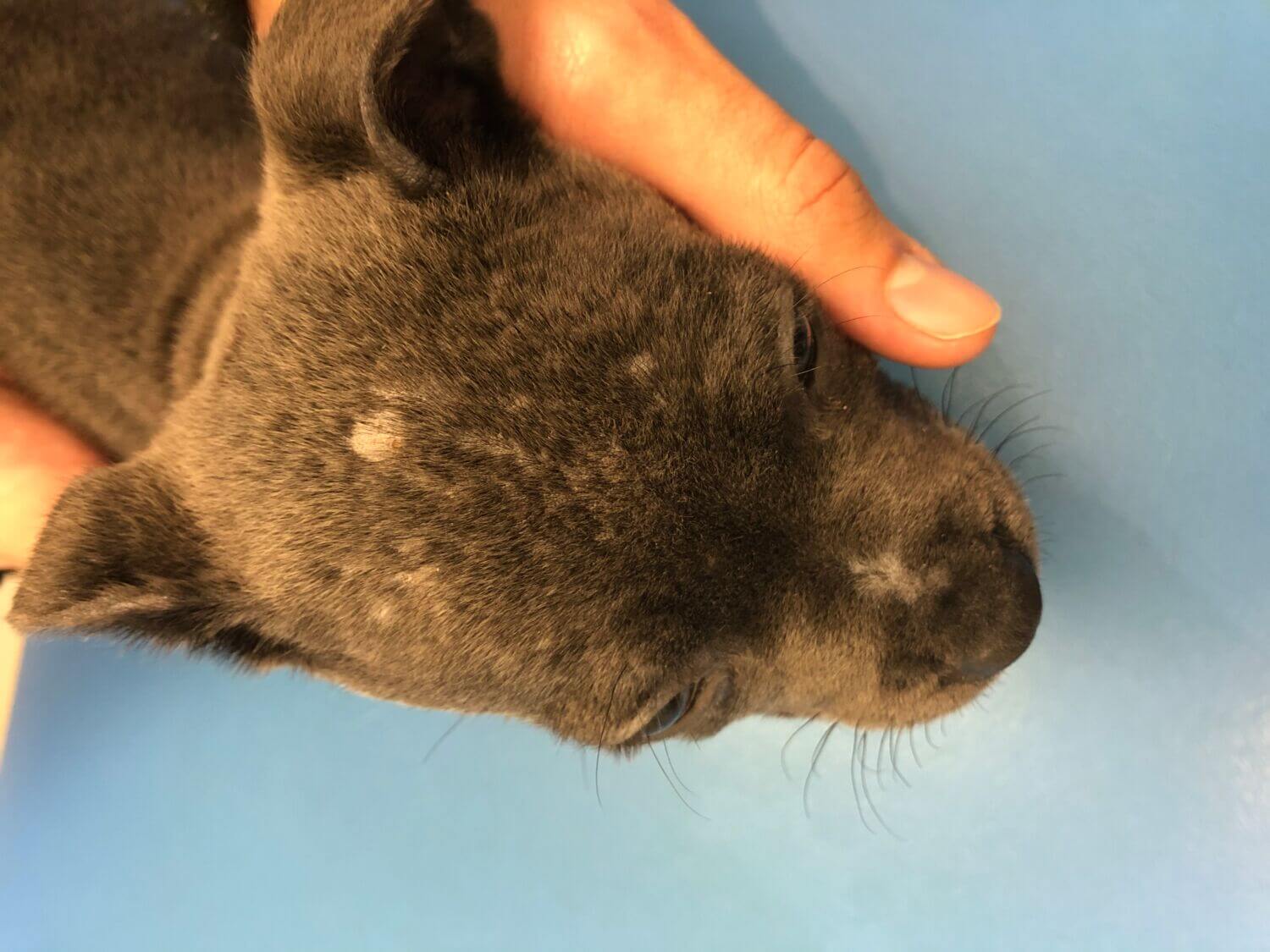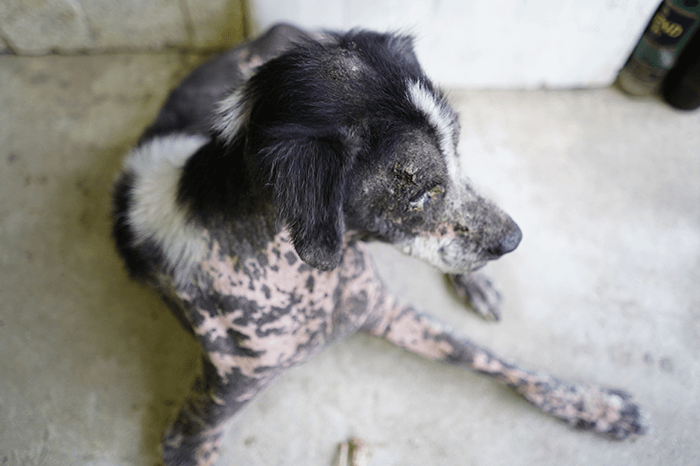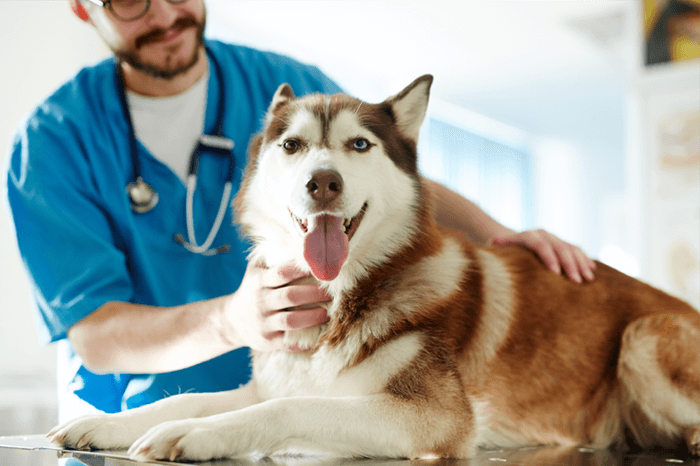Get to know the most common skin conditions in dogs
Marina G VeterinarianSkin problems are really common in dogs. Fortunately, skin is also the most visible organ of the body, so that you can react really quick when discovering anything wrong.
Skin problems are very common in dogs and can range from something as simple as itchiness from fleas to recurrent infections due to an underlying skin or health condition.
This means that how your dog’s skin and coat look can offer a lot of valuable information, not only about the state of the skin itself but also regarding your pet’s overall health.
How can you tell if your dog has a skin problem?
Skin problems in dogs can manifest through a variety of signs and lesions, including:
- Itching (pruritus) and scratching
- Hair loss (alopecia)
- Irritation and redness (inflammation)
- Darkened and thickened skin
- Sores, wounds, and ulcers
- Scabs and crusts
- Tiny bumps (papules and pustules)
- Dry, flaky skin with dandruff or oily, malodorous skin
- Lumps and bumps (nodules)
Dogs with skin problems can show one or more (usually more) types of these lesions.
As the skin is the dog’s largest organ and as it is readily visible (unlike internal organs, such as the liver and kidneys), these lesions are usually easy to notice. However, they can be hidden in dogs who have long coats, and itchiness, for example, can come and go, so you may not always be able to notice them.
Also, it’s important to keep in mind that the ears are also a part of your dog’s skin and many problems that affect the skin will also affect the ears.
There are several conditions that can lead to cutaneous problems, from problems that are limited to the skin to systemic diseases that have an impact on dogs’ overall health.
Can parasites cause skin problems?
External parasites are not only extremely bothersome, but they can also bring a host of other health problems to your dog, including internal parasites, complicated infectious diseases, home infestations, and, you guessed it, skin problems. Common parasites include:
Fleas
Fleas are by far the most common external parasite to affect dogs. They have a ubiquitous nature and, even though parasite activity is more pronounced during spring and summer, fleas can be a problem all year round.
If your dog has fleas, the first thing you’re likely to notice is that your dog is very itchy. If you run your fingers through your dog’s hair, you may be able to find fleas moving around or flea faeces, which look like black specks of dust.
Skin lesions are usually the result of scratching and include cutaneous irritation, redness, wounds, crusts, and hair loss. Dogs who are allergic to flea bites are more severely affected and often develop secondary infections.
Mites
There are several species of mites that can affect dogs, the most common being Sarcoptes scabiei, responsible for canine scabies, and Demodex canis, responsible for demodicosis. Mite infections are usually more common in younger dogs.
Scabies – sarcoptic mange
Scabies is a highly contagious skin disease that can be transmitted to humans and other pets, and dogs usually catch it by contact with other infected dogs.
As the mites burrow under the skin, this disease is very pruritic. Dogs usually present with multiple skin lesions, most often localised on the underside or belly, elbows, feet, face, and ears, and include red, thick, hairless, scabby, crusty and even broken skin.
The severity of the itchiness is gradually progressive, and the disease also gets worse with time if not treated. Secondary bacterial and Malassezia infections can develop.
Demodicosis – demodectic mange
Demodex mites are naturally present in dogs’ hair follicles. In some dogs, there’s an overgrowth of these parasites that leads to focal or generalised skin disease.
Why some dogs develop skin disease due to Demodex mites and others don’t is still not quite fully understood yet. However, there seems to be an inherited predisposition to demodicosis, with Shar Peis, West Highland White Terriers, and English Bulldogs, for example, being overrepresented. Problems that lead to debilitated immunity also seem to be involved in the development of the disease.
Demodicosis can be localised to a certain area of the body, causing small, red, scaly areas of hairless skin, most commonly on the face and legs, or generalised (see picture). Generalised disease is usually severe and can be further complicated with secondary bacterial and Malassezia infections.
Dogs can be itchy due to demodicosis, but pruritus is variable.
Skin infections, common secondary problems
Healthy skin hosts a vast population of microorganisms, including bacteria and yeasts, that normally act as a part of the skin’s protective function against external aggression. However, when the skin is harmed, this delicate balance is altered, which can lead to the overgrowth of these (and other) microbial populations, leading to infections.
This means that secondary skin infections can develop as a result of any disease that compromises the skin or that leads to itchiness.
Infected skin usually looks inflamed, thick, moist and/or crusty, and it’s generally very itchy. It can also have a nasty smell. Dogs are likely to lick, rub or scratch affected areas to try and find some relief, which only makes skin damage worse. Long-term and recurrent skin problems and infections tend to cause alteration in the colour and texture of the skin, with the skin becoming darker and thicker (lichenification).
Skin infections can start as hotspots, which are localised areas of inflamed, often becoming infected skin, and are very common in dogs, especially during spring and summer. Depending on the type of the underlying problem and the dog’s level of itchiness and subsequent self-harm, the severity will vary.
Bacterial infections
Bacterial skin infections, also known as pyoderma, are usually caused by Staphylococcus spp. Initial lesions may include papules, pustules, which look like tiny pimples that can be filled with pus and crusts notably.
Yeast infections
Yeast infections, or Malassezia dermatitis, are caused by Malassezia pachydermatis, and tend to develop in skin folds, between the toes and within the ear canal (otitis), although they can appear anywhere on the body. These also tend to have a very particular smell and a recurring nature.
Ringworm
Ringworm is a contagious infection that dogs can pick up by being in contact with infected animals or contaminated objects.
This type of infection usually causes very distinguishable lesions, with a circular-shaped bald spot that often has inflamed (red) edges, like a ring. However, contrary to what the name suggests, ringworm is not a parasitic disease. Instead, it is caused by a fungus (dermatophyte).
In some dogs, ringworm can also cause itchiness, and pruritus can worsen if a secondary bacterial infection develops.
Do allergies affect the skin?
Yes, dogs can suffer from allergies, just like we do! The most common signs of allergies in dogs are itchiness and secondary skin lesions, such as inflammation, wounds, crusts, hair loss and infection.
Lesions are common on the underside or belly, the groin, the armpits, the face, the paws and in between the toes. However, lesion distribution can be highly variable from dog to dog. The ears are also commonly affected in allergic dogs, who are prone to recurrent otitis (ear infections).
Allergies are caused by an exacerbated reaction of dogs’ immune system to an otherwise harmless substance (allergen). As a result, a powerful inflammatory response is triggered, which is responsible for the signs that we see.
Allergies are usually categorised into 3 major groups depending on the allergens involved:
- Flea allergy dermatitis, when the allergens involved are proteins present in flea’s saliva.
- Food allergies, when the allergens involved are components of your dog’s food.
- Atopic dermatitis, when the allergens involved are particles present in your dog’s environment, such as pollens and dust mites.
However, it is challenging to distinguish between the three as they all manifest similarly, and as allergic dogs are prone to have more than one type of allergy.
There are some breeds that are predisposed to allergic disease, such as the West Highland White Terrier, Labrador and Golden Retrievers, German Shepherds, French Bulldogs and Pugs, for example.
Seborrhoea, easily distinguishable
Canine seborrhoea is a skin condition caused by an imbalance in new and dying skin cells during the skin’s normal three-week cycle. Oily seborrhoea is often characterised by a greasy coat and skin and often a bad smell due to an increase in sebum production. Dry seborrhoea often displays as scaling or ‘dandruff’ as the lack of sebum irritates the skin. It’s quite common for dogs to suffer a combination of both. Seborrhoea is in most cases a result of an underlying condition such as allergies or endocrine disease, but it can be primary, affecting younger dogs of certain breeds (such as Golden Retrievers for Ichtyosis for example).
Skin problems – beyond the skin
Skin problems can be so much more than what meets the eye. There are several systemic diseases that can manifest through cutaneous lesions, which is why dog owners should be doubly vigilant when dealing with skin problems.
For instance, hormonal diseases, such as hypothyroidism, Cushing’s syndrome, which are common in senior dogs, or sex-hormone related disorders, often cause (symmetric) hair loss among other signs.
Auto-immune disease, even if quite uncommon can also manifest through cutaneous lesions, often affecting the nose, but also other parts of the body. Lesions are highly variable, but they usually have a symmetric distribution as well.
Preventing skin problems
There are ways in which you can prevent certain skin problems, for example, by keeping regular parasite treatments up to date, grooming and inspecting their skin regularly, and keeping your dog’s skin clean and nourished by bathing when necessary, using a pet-friendly shampoo. DOUXO® S3 range offers a complete variety of innovative products based on Ophytrium to support skin health whatever your dog’s type of skin.
Keeping an eye on your dog’s skin and coat can provide valuable information regarding their overall health. If you recognise any signs of skin problems in your dog, we recommend that you book an appointment with your vet for a thorough check-up.


